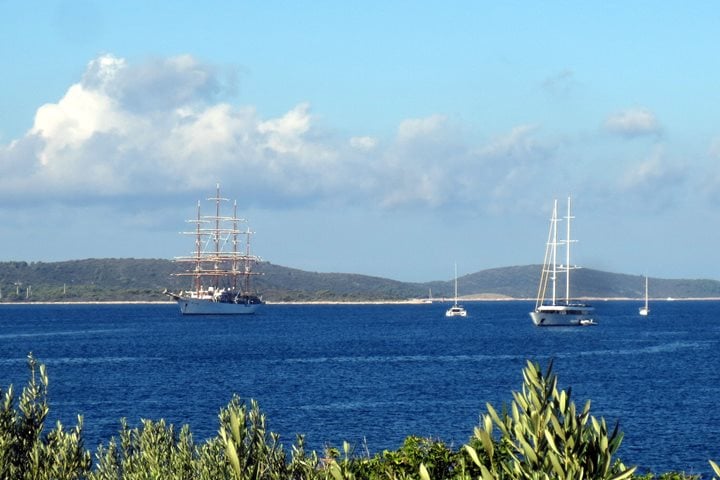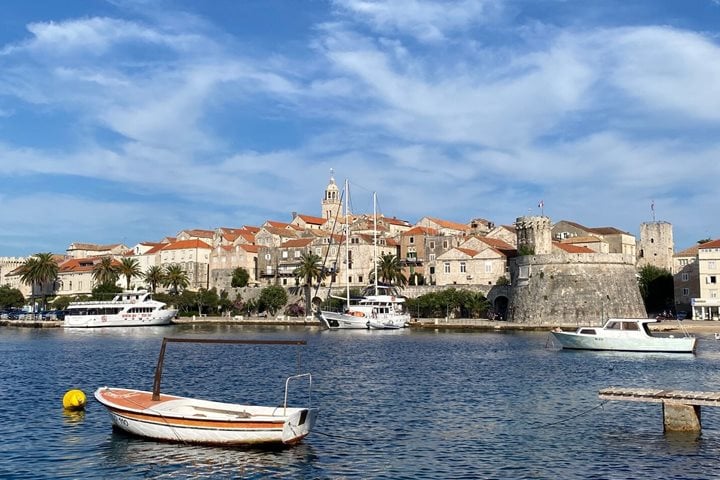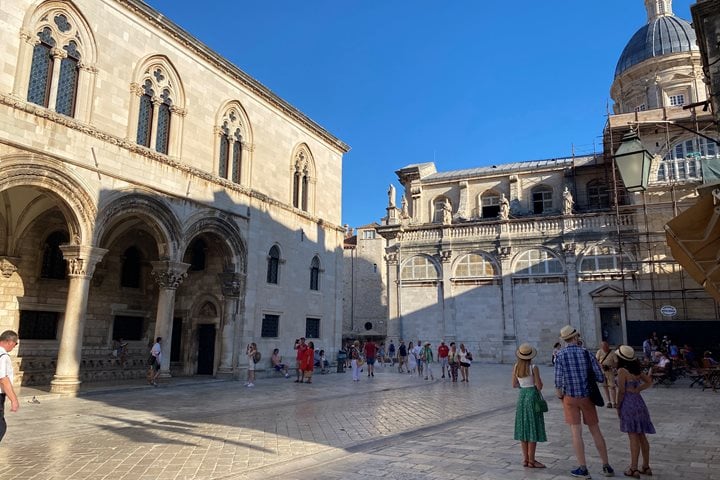…”Let me tell you that Buthrotum (Butrint) is …the quietest, coolest, most pleasant place in the world….”
Cicero Letters to Atticus 4.8.1 (56 BC)
In the intervening 2,000 years, empires may have fallen and earthquakes may have destroyed many of the buildings of this once great city, but Cicero’s description of the physical setting of this ancient Greek then Roman trading colony still hold true. Situated on a hill adjacent to the Vivari Channel that joins Lake Butrint to the Ionian Sea, the ruins of Butrint are nestled under the spreading branches of Mediterranean pines, linden and eucalyptus trees. We started our tour of this UNESCO World Heritage site with a visit to the Sanctuary of Asclepius. While the original structures date to the Greek classical period, the most prominent features in the area were the theater and pilgrim’s hostel, which were added in the 3rd century BC during the Hellenistic period. We continued on past some of the shops of the Roman Forum before visiting the remains of a Roman villa that was later used as a Byzantine chapel. A little further along the path, standing alone in a small clearing, was the remains of a wonderful octagon-shaped Byzantine Baptistery with two concentric circles of eight columns. The final feature that we toured in the lower city was the Byzantine basilica whose towering, intact walls of the nave and adjacent aisles help convey a sense of serenity and majesty. After passing under, through and up the stairs of the Lion’s Gate we climbed to the top of the site where a 16th century Venetian fortress houses the small, well-curated site museum. Originally the site of a Greek Temple, the surrounding terrace offered an almost 360-degree view of the surrounding countryside,
We returned to Saranda the way we came, via the new road that runs along the west side of the Lake Butrint. Along the way our guides regaled us with stories of life under the communist dictator Enver Hoxha and tales of living in Albania during the aftermath of the 1991 fall of the communist system, the1996 ”ponzi-scheme” financial crisis, and the misadventures of illegal apartment construction.
Our last stop of the morning was Lekuris Castle, an old Ottoman fortress perched high on a hill above the modern town of Saranda. There, perched precariously on the wall above the main gate stood Vendim Kapaj, playing a long flute made of copper piping, dressed in traditional costume of an Albanian villager.
After returning to the ship and having a late lunch we settled into our deck chairs with our books for what we thought might be an uninterrupted afternoon of sailing. That was until the northeast winds picked up to 30 knots, which blew us further and further from away from tomorrow’s destination. As the sails were clewed-up, Tom O’Brien gave us a wonderful presentation of the history of the Sea Cloud and all the luminaries that had walked the same decks as ourselves. The sun set just as the dinner bell was rung, signaling the end of yet another wonderful, action-packed day of new discoveries.







